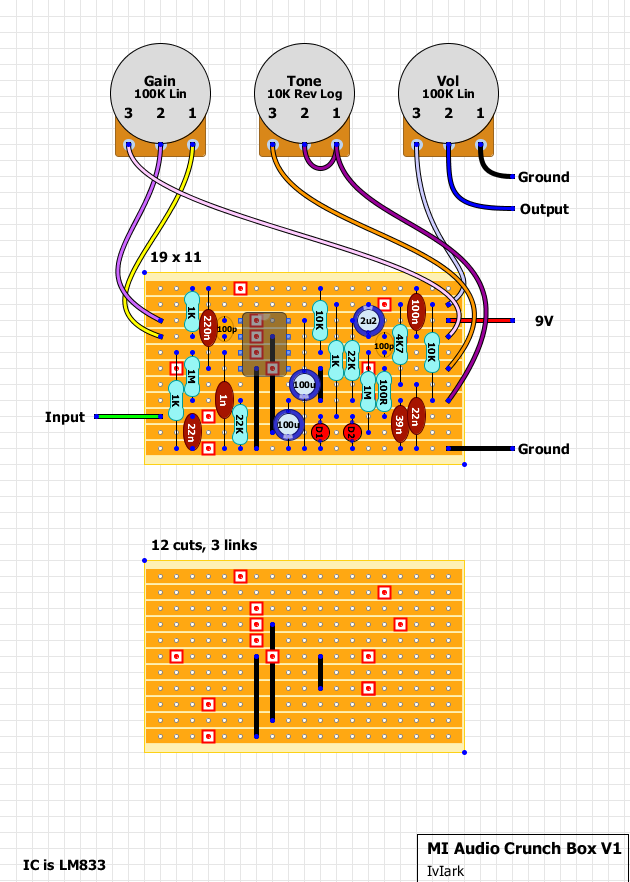Crunchbox V1
|
I love the Crunchbox V1 - but right now I have some low end I can't get rid of. I would like to rebalance the tone control so I get max treble and control the amount of bass output. As far as I can tell in the schematic the tone control is now a low pass (and it works like one). How do you change it to a high pass?
(I am pretty sure you put the cap to follow the pot, not before it, but how would you physically do that in the layout?) If that is right - how might you do that in the layout? Or would it better to just add high pass so you can filter out some of the low end?  
|
|
The approach you should take depends on what you mean by 'too much bass'. Specifically, you have to decide whether you want to cut bass before or after the dirt. The difference between these options will probably be pretty striking.
If you're not sure, and you have an EQ pedal (or better yet, two of them), try putting them before and after the Crunchbox so you can see how it will behave with a pre- or post-dirt bass cut. Once you clarify that, we can give you some suggestions. Either way, though, you will have several implementation options. So I'm going to give my usual recommendation to play with it on the breadboard, so you can actually hear how your mods will sound before you commit the circuit to vero. |
|
Thanks for the reply - I do have it on my pedal board, followed by a nice ROG EQ pedal. It has the perfect gain and mid/treble tone, but it has too much low end that I cannot dial out.
As you said- the goal is to get it to fit in with the tone of rest of the pedals on my board so when I dial in my amp that one pedal is not an outlier in terms of frequency response. I think I need to trim it at the front of the pedal - the circuit has so much gain that I have the gain set at just about 30% - if I turn it higher I start to get compression, loss of attack and some swell. However, that is controllable by just turning the gain down and it still sounds great (except for too much bass). I do think it might work better to reduce it up front, though, which I didn't think about until you mentioned it. I admit I need to learn how to find the up-front high-pass cap in each circuit that is generally used to control how much low freq goes into the circuit. Is it C2? |
|
C2 is a lowpass filter that removes harshness/highs before entering the first gainstage.
C1 is the highpass input filter, but that is allread quite low (22nf) But C5 seems to be a low end boost in the feedback loop of the first gainstage. You could try lowering that one... You can also aim for C7 which is quite large and lets a lot of bass trough (2.2uf) If you lower that one to somewhere around 100-220nf it would filter away some of the extreme low end coming out of the second gainstage without changing the distortion character of the circuit, which might be affected by changing C5 as low frequencies often has the greatest effect on how it distorts. Lowpass is recognised by the fact that the sound/audio-path passes trough the cap. Higpass is recognised by the fact that the cap connects from the audio-path and towards ground (with the exception when it is located in the feedback loop, as with C5 in this case) Hope this helps tweaking it to your liking... |
|
Great post Neil - thanks for explaining the difference in cap implementation for low/high pass. Good to know.
I guess I'll try both of them (C5, C7) and see what I learn. |
«
Return to Open Chat
|
1 view|%1 views
| Free forum by Nabble | Edit this page |

